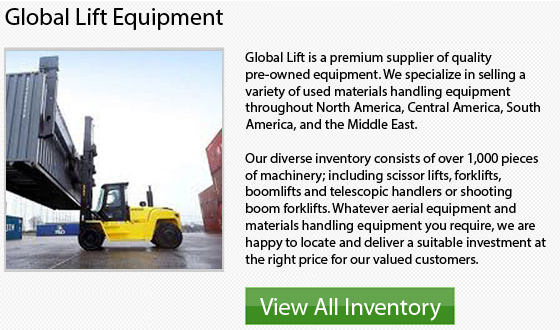
The counterbalanced forklift is a lift truck that uses a counter balance that is connected to the back end of the machinery. This counterbalance effectively balances loads that are placed on the forks at the front end of the machine. This specific design is engineered to stabilize typical lift trucks. When it comes to electric counterbalance forklifts, the battery itself forms the counterweight.
Nearly every lift truck manufacturer will have in their product range, a counterbalance forklift. These machines will come in a wide assortment of fuel sources, sizes and configurations. These forklifts could with pneumatic or solid tires. They are capable of working in diverse applications. These types of forklifts are equipped with a variety of accessories. Common attachments and options include: side shifts, hydraulic clamps, slip sheet attachments and fork shifts just to name some items.
The counterbalance forklift has in fact changed the entire industry of material handling. These machinery are vital to the shipping and receiving centers around the globe because they are used for stacking, loading, unloading and horizontal transport functions. The standard warehouse forklifts are normally used for lift heights less than 6 meters or 20 feet. There have been some units recently developed which are capable of lifting to heights 31 feet or 9.5 meters. The smaller 1-1.8 ton or 4000 lbs. forklifts are the main workhorses within the majority of warehouses. These are the most popular models that the majority of small companies will own. The standard warehouse counterbalance forklift is a wide-aisle truck which needs around 3 meters or 11 feet to turn in.
Counterbalance forklifts are not necessarily confined to the warehouse. They are often utilized for heavy use and carrying containers together with pretty much every application in between. Counterbalance forklifts are the most widely used and versatile of all materials handling machinery.
Because of their durability and versatility, counterbalance forklifts are commonplace in a large range of working environments, like retail, warehousing and production. Some of the industrial applications include: timber, automotive, chemical and food industries.